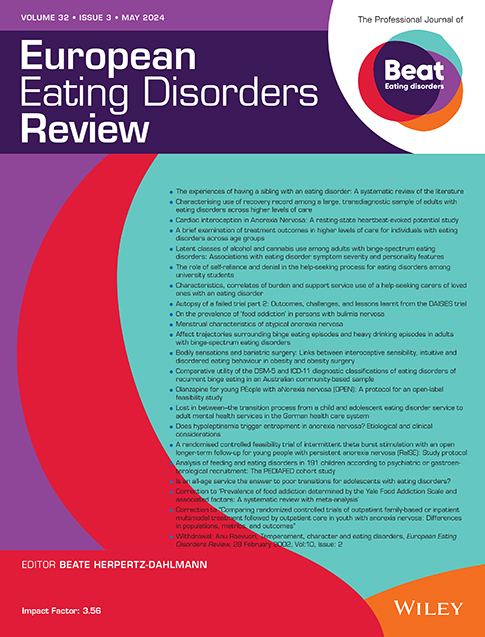Sexual Dysfunction in Women With Eating Disorders: Systematic Review and Meta-Analysis
Abstract
Background
Eating disorders (EDs) are common mental health conditions that impact people globally. Sexual health problems are also widely researched across various contexts. This paper explores the connection between these two areas by conducting a meta-analysis to assess sexual dysfunction (SD) in women with EDs compared to healthy individuals.
Methods
Multiple electronic databases were searched. Studies reporting mean scores of SD scales in women with EDs compared to women without these conditions, were included. The combined analyses used standardized mean deviations (SMDs), with relevant 95% confidence intervals (CIs). Each study was weighted using inverse variance models with random effects. The risk of publication bias was estimated.
Results
From an initial pool of 2665 studies, 7 studies met inclusion criteria for the systematic review, involving 908 individuals. Out of these, five studies focussing on women with AN or BN were eligible for meta-analysis. No study involving the BED female group met the inclusion criteria to be included in the meta-analysis. The association between SD and AN showed a random-effects pooled SMD of −0.95 (95% CI = −1.40 to −0.50) with high heterogeneity (I2 = 78.32%, p = 0.01). For BN, this was of −0.51 (95% CI = −0.88 to −0.13) with no heterogeneity (I2 = 0.00%, p = 0.76). Sensitivity analyses showed that the overall effect is sensitive to the type of questionnaire used to measure the SD.
Conclusion
The results indicate that SD is more pronounced in women with AN than in those with BN. More studies with robust methodological designs are necessary to further investigate SD. The female BED group should be included in future studies focussing on SD. The findings suggest that sexual health interventions should target women with EDs, as these conditions have a significant impact on relationships and sexual satisfaction.

 求助内容:
求助内容: 应助结果提醒方式:
应助结果提醒方式:


